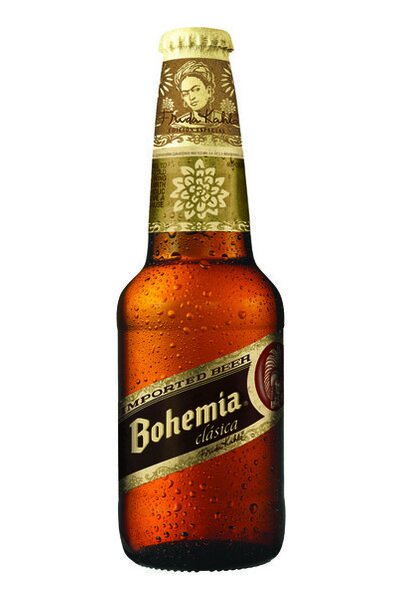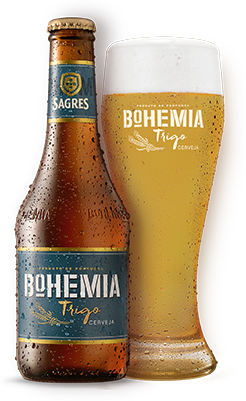The Beer Portugal is Drinking
By now, you all know that one of my passions in life is craft beer. But perhaps my other most favorite thing in life is traveling the world and having new experiences. Each fall, I try to embark on a new journey to a different corner of the globe. Last spring, my wife and I sat on the back deck and started to come up with a list of all the places that we wanted to see in our lifetimes. The criteria mainly consisted of: favorable weather during October/November, proximity to beaches with good surf and some other sort of beautiful geographic landscapes, language spoken, length of travel with our children and, of course, quality of cuisine and beer! On the list were places like Iceland, Argentina, Indonesia, New Zealand, the Pacific Northwest and South Africa. It had been years since either of us had been to Europe, and the one place that checked off all of the boxes was Portugal, so we booked our trip.
Portugal’s situation on the southwestern corner of the European continent, with immediate access to the Atlantic Ocean and Strait of Gibraltar, fostered a nation of seafarers who depended on the sea, and used their mastery of navigation to colonize several continents and grow the kingdom to one of the most powerful in the world. It is one of the oldest sovereign states in all of Europe, once settled by the Celts, Romans, Visigoths, and other Germanic tribes. It took the name Portugal after the Reconquista of the Iberian Peninsula, when Christian forces expelled Islamic Moors from the land.
The golden era of Portugal lasted from the Reconquista through colonization (the years 711-1822), but as its many colonies started to gain their independence, Portugal lost much of its world power.
Today, Portugal is one of the most progressive, modern and peaceful countries in the world, yet much of its old-world architecture is still intact. Its people were warm and hospitable, and seemed to enjoy an unrushed and quaint lifestyle. Most people live by the coastline in traditional fishing towns where centuries-old fortresses and cathedrals meld with narrow streets sewn with tile-clad row houses, both old and new. The big city of Lisbon is not much different, except for the grand plazas along the Tagus River, and the cable cars climbing the hilly streets. Aside from the newer apartment high-rises just outside the city, you felt as though you were stepping back in time to the 15th century.
Once you leave the city, most of the country consists of rolling farmland, vineyards and cork-tree forests. I was astonished by the obvious commitment to renewable energy, as wind-power mills seemed to be everywhere throughout the country.
Our first destination was Peniche, about an hour north of Lisbon on the coastline. The old city, surrounded by fortress walls, was once an island but eventually became connected to the mainland through sedimentation. The peninsula neighbors several smaller headlands that face north, west, and southwest, making it a highly consistent surfing destination. In fact, its most famous break, Supertubos, is a stop on the pro-surfing circuit in late October. We missed the contest by about a week, and were unfortunately met with high winds and rain for the first few days. But it offered us the opportunity to explore other nearby towns like Obidos and Nazare. Obidos is a small castle village nestled on top of a hill just inland of Peniche that hasn’t changed in hundreds of years. The cobblestone streets were lined with typical whitewashed stone buildings trimmed in blue or yellow, little old ladies selling shots of Ginja (cherry liqueur) for 2 euros, and tiny restaurants specializing in grilled sardines (the national dish). It was here that I had my first beer of the trip, since I had been sick for the first few days.





Estrella Galicia “1906” Black Coupage (7.2% abv)
This beer is actually from Spain but came highly recommended by the server. It was dark brown and served in a stemmed goblet with a narrow lip and wide hips. Black licorice and cherry floated on the fumy, boozy nose, with a burnt-toast flavor noticeably kicking in on the effervescent finish. Medium- to heavy-bodied for a dunkel lager.
Nazare is somewhat of a newer surfing mecca. In 2011, big-wave surfer Garrett McNamara brought fame to the little-known town when he surfed one of the largest waves ever recorded in the world at Praia do Norte in Nazare, measuring 78 feet. We just missed the largest swell of the fall but still managed to walk out on the headland to view some 15-to-20-foot windblown swells. The old city sits up high on the headland, and the newer touristy summer town looks up from down below, complete with a long beachside promenade. Here we tried air-dried fish, a traditional preparation done by the fishermen’s wives right on the beach. Needless to say, it was a tough food to get down. Our only relief was to chase the salty, oily protein with a nice refreshing Super Bock.
Super Bock (5.8% abv)
One of the two most popular beers in Portugal, this dry golden lager is smooth and refreshing with a slightly viscous mouthfeel reminiscent of a bock, but it tastes more like a pilsner. Mass-produced and probably containing adjuncts, I can’t claim that this is a craft beer, but its ubiquitous availability and cheaper price made it the go-to beer for me in Portugal. I bring home a beer bottle filled with beach sand from every country I visit, and this is the bottle I chose.
A couple of days of good surf under the belt, and a few castles later, it was time to hit Lisbon and meet up with my mom, who just flew in, and brother Michael and his friend Tom who were linking up with us at the end of their 3-month Euro-trip. Two days were spent wandering the maze-like alleys of the Alfama district, climbing to the panoramic Castelo de Sao Jorge, and strolling the Baixa-Chiado shopping strip. With a newfound babysitter, we managed a night out in the boisterous Bairro Alto, hitting tiny hole-in-the-wall bars until the early hours. That night I did try my only IPA of the trip, but I seemingly misplaced my notes on that one. Who knew they loved Jagermeister in Portugal?
The last day in the city, we made it a point to stop in Cervejaria Trindade, the oldest beer hall in Portugal. While beer is not brewed there, it featured the full array of Bohemia beers (not the Mexican brand). Sometimes beer just tastes better due to the setting, and on this occasion the hand-painted tile walls and arched ceilings of the beer hall were the perfect setting for a Lisbon Happy Hour.
Bohemia Trigo (5.5% abv)
Trigo means “wheat” in Portuguese. In the style of Belgian witbier, this beer contained a strong flavor of coriander and some orange peel. Medium body, low bitterness, and a nice, frothy head.
Bohemia Original (6.2% abv)
A Marzen-style lager, similar to a Sam Adams or Yuengling but heavier in body. Ruby brown in color, molasses and roasty sweetness make malt the star in this one.
Bohemia Puro Malto (6.0% abv)
Hoppy pilsner with fuller body than typical lagers. Fresh malt flavors of cereal and bread.
If you go to Portugal, you had better stop in Sintra. Located about 40 minutes west of Lisbon, it would be easy to spend two days in this majestic municipality. With several ornate palaces and mountaintop castles, the architecture and views here demonstrate the power and wealth that Portugal once yielded. We stayed in Cascais, a small, upscale beach town not far from there, and made the day trip. One night we hit an Irish pub called O’Neill’s, and rather than have a Guinness, I tried the local version.
Super Bock Stout (5% abv)
Produced by the brewery that brings you Super Bock. This stout was black, dry and roasty just like the style should be. It was a tad bitter for my taste, and on the lighter side. I enjoyed it but would not say that Portugal is a place that will ever be known for dark beer.
When you go to the southern coastline of Portugal, the Algarve, it is as if you are stepping back in time. Much less developed except for some resort towns dotting the beaches, it is where I would choose to go if traveling by camper van. Arid and hilly, with gorgeous cliffs protruding the edge of the European continent into the Atlantic that make for stunning vistas and isolated beaches. The surfing is very good in this region as well, and of course the seafood is in no short supply. Sagres is the most southwestern cape in the country and the second-most popular beer in the country is named for it.
Sagres (5% abv)
A milder counterpart to Super Bock, this bubbly pilsner looks like champagne in the glass and is best consumed ice cold. For a mass-produced beer, it is quite palatable and though it lacks complex flavor, it is better than the typical American light lager.
I would be remiss if I didn’t mention the abundance of affordable delicious wines in Portugal. Every region of the country produces wine of all varietals, including native styles like Vinho Verde (green wine) and Port. It was not difficult to pick up great bottle for less than €7 at the store, and every restaurant would have a house wine for about €10/bottle. It is easy to overlook the rest of the wine from Portugal when it is renowned for port, but most are cheap and agreeable.
After a few days in the Algarve, it was time to head home. In the country better known for wine, I still managed to sample some delicious crafty beers, and most of the mainstays. Alcohol is part of everyday life there, and thus beer’s place is much like that of a soft drink here. It makes sense that the citizens tend to stick to everyday lagers and wine. There really is something for everyone in Portugal, from the castles and coastlines, to the seafood and wine. It has yet to become as much of a tourist magnet like Spain, France or Italy, so it is a nice place to go for a leisurely vacation.
I would highly recommend it! Saude!



